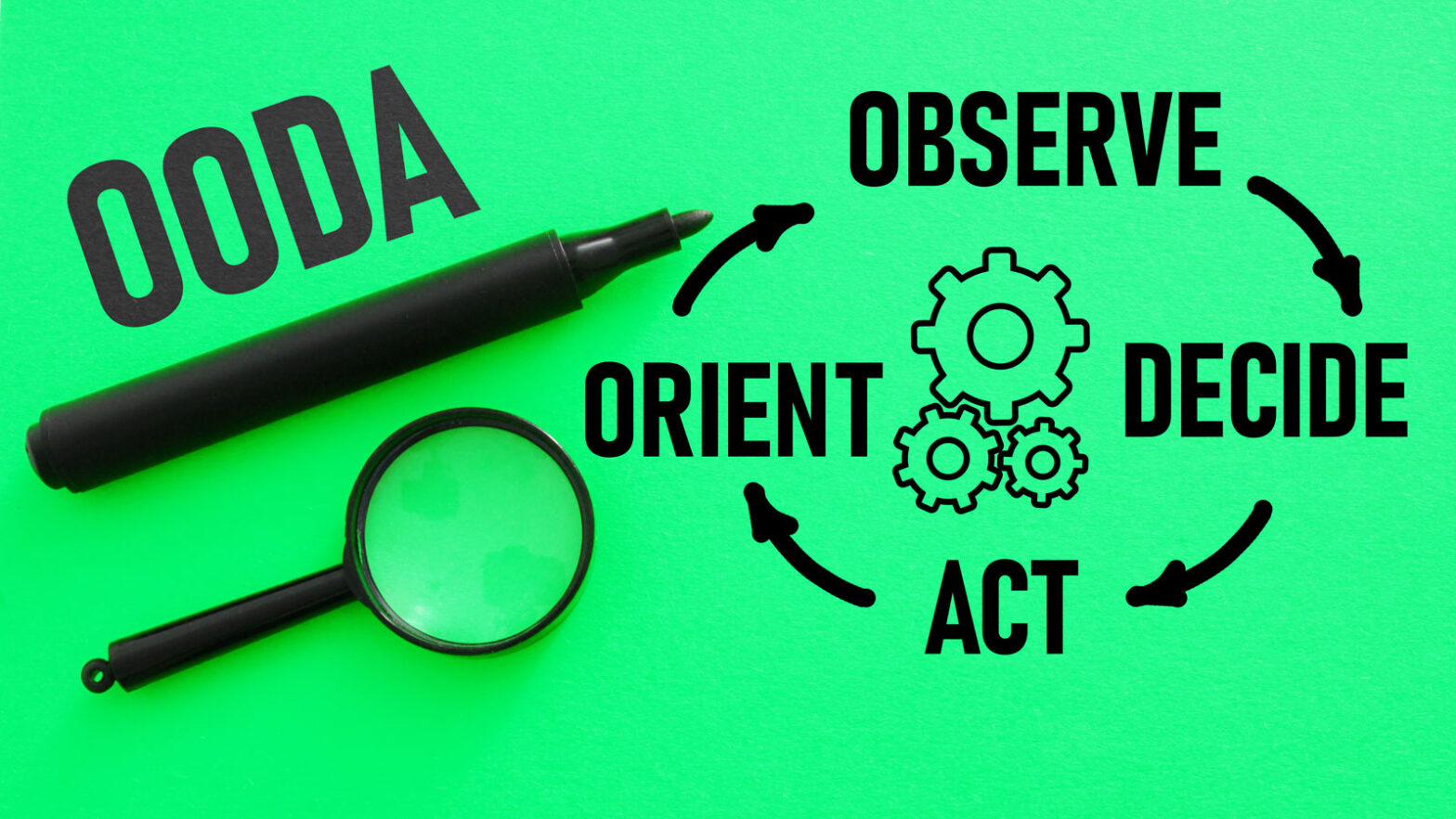“If you want to understand something, take it to the extremes or examine its opposites.”-Boyd
The ability to make swift, effective decisions is invaluable. Colonel John Boyd’s OODA Loop is the go-to framework that leaders can leverage to sharpen their decision-making skills and overcome challenges. It is a phenomenal tool for developing emotional intelligence as you move through your day in professional and personal moments.
The OODA Loop, an acronym for Observe, Orient, Decide, and Act, is a decision-making model that was initially developed and refined by Air Force Colonel John Boyd during military combat. Since then, it has proven to be a valuable tool not only in military strategy but also in a wide range of professional fields, including business and leadership. Here are the four stages of the loop:
Observe: The first step involves gathering information from the environment. Leaders must be present and remain vigilant, constantly scanning internal and external landscapes for cues that signal shifts in market trends, team dynamics, or operational challenges. This phase requires you to develop an acute sense of situational awareness and stay attuned to the pulse of your organization, industry, and the broader economic climate.
Orient: This phase is the crux of the OODA Loop, where leaders synthesize observations. It’s about context, filtering information through personal experiences, values, and the organizational culture. This step is critical in shaping a leader’s perspective and preparing them for informed decision-making. Be aware of your biases and ensure you are looking at multiple angles/perspectives of what arises in a situation. Orientation requires that you be curious, foster a learning mindset, and encourage diverse viewpoints while challenging assumptions.
Decide: With a clear understanding of the situation, leaders must weigh their options and commit to a course of action. Move with courage (heart and mind alignment). Any decision should align with the organization’s strategic objectives and the insights gained from the observation and orientation phases. When it’s time to decide, you must balance decisiveness with flexibility. Set clear objectives and be prepared to pivot as new information emerges. No plan survives contact; therefore, being ready to make micro or macro adjustments is vital to success.
Act: Leaders put their decisions into action, translating strategic choices into tangible results. This step not only closes the loop but also feeds back into observation, as leaders must be able to clearly assess the outcomes of their decisions. In the action phase, you must be agile, focused and moving with speed and precision. Agility doesn’t mean recklessness; it is better defined as being responsive to feedback from the loop, peers, and team, and ready to iterate. Measuring the impact of actions is crucial, as it informs the next cycle of the OODA Loop, ensuring continuous improvement.
The OODA Loop’s iterative nature encourages you to be more proactive than reactive, staying ahead of competitors by making faster, more informed decisions. By continuously cycling through the OODA Loop, you can build a rhythm of strategic thinking and execution that keeps you nimble and responsive to change. You can make decisions that are not only swift but also deeply rooted in a comprehensive understanding of the operational environment. By mastering Boyd’s OODA Loop, you can transform decision-making from a potential bottleneck into a strategic asset, driving you and your team forward with success in this VUCA world.


